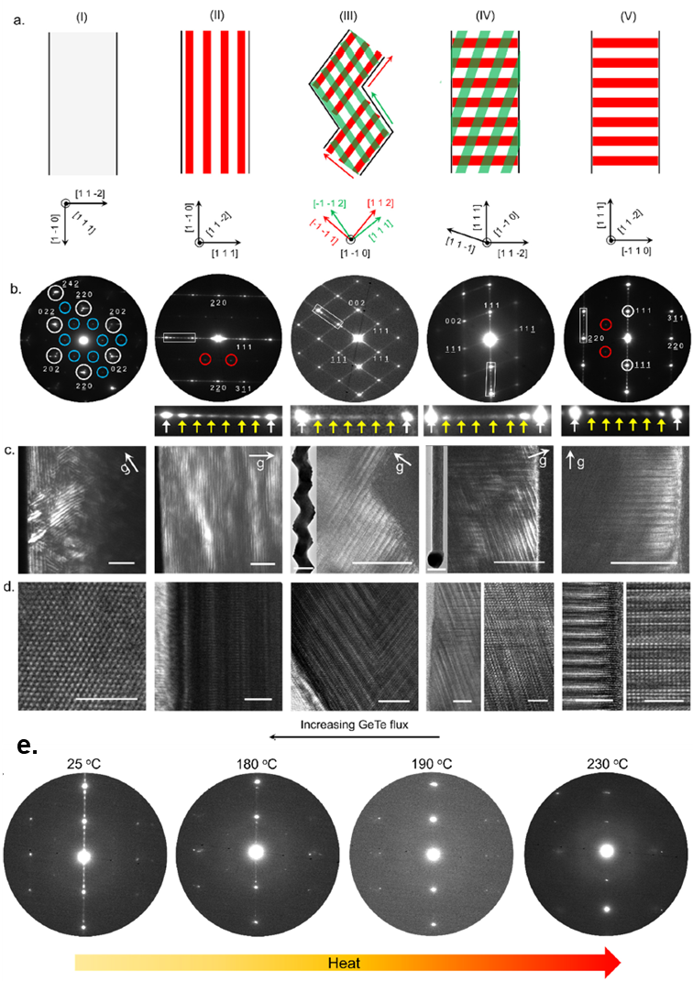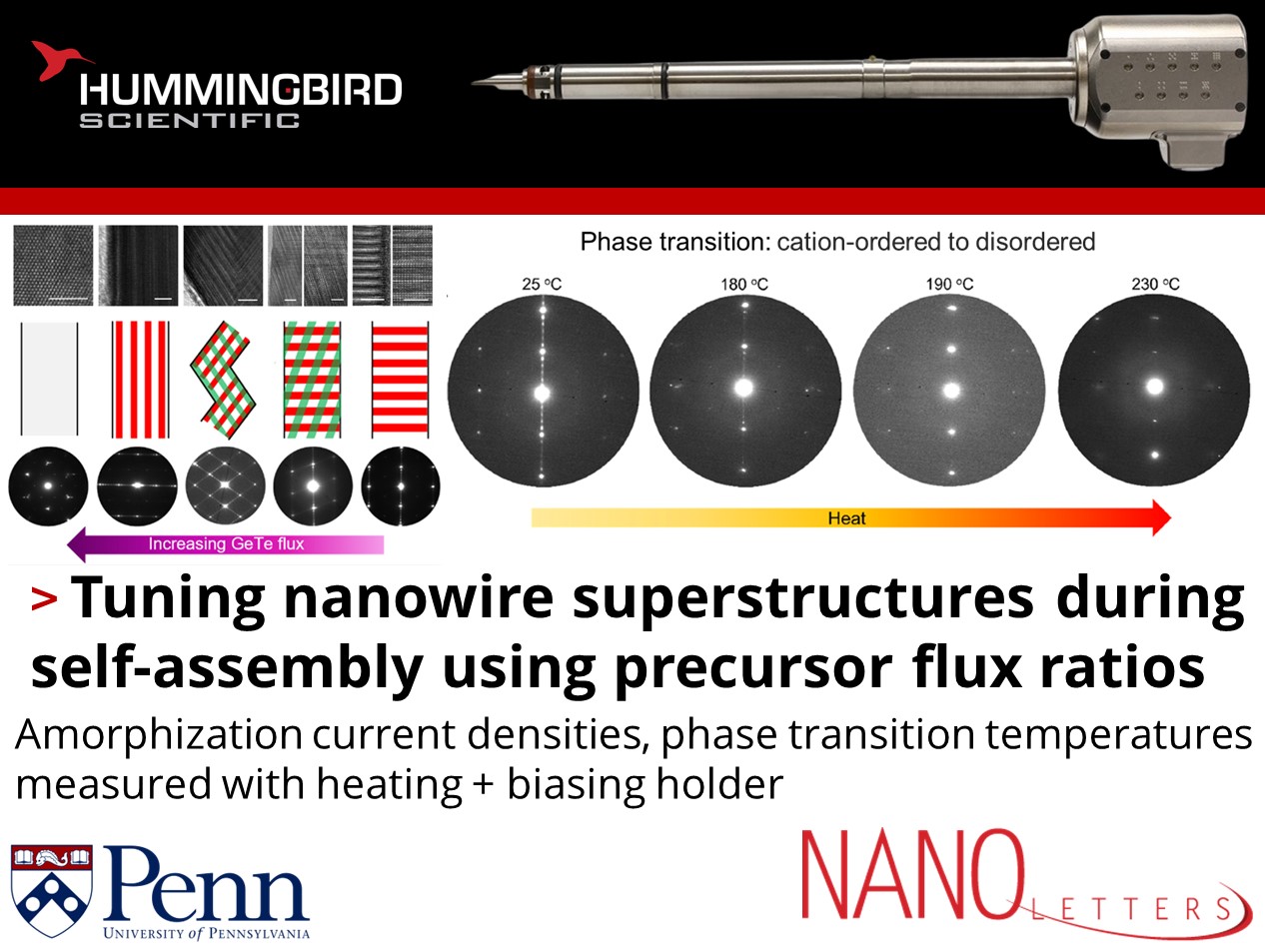How precisely can the microstructure of nanowires be engineered?
Gaurav Modi, Ritesh Agarwal, and their colleagues at the University of Pennsylvania published the results of Ge-Sb-Te nanowire self-assembly experiments using their Hummingbird Scientific in-situ MEMS heating + biasing TEM holder. The team demonstrated precise tunability of nanowire synthesis by tuning precursor flux ratios during vapor−liquid−solid growth, deterministically varying the nanowire growth direction, facets, and periodicity of the cation ordering.

Figures showing a) Schematic illustration of the different types of nanowire superlattices, labeled I−V, synthesized by changing the GeTe flux during growth. (b) Selected area electron diffraction (SAED) of the superlattice nanowires. c) Dark-field (DF)-TEM imaging of the nanowires shows modulation of bright and dark contrast along the direction of Ge−Sb cation ordering. (d) High-resolution (HR)-TEM image of the nanowires showing a hexagonal arrangement of atoms for type I, while bright−dark contrast modulation is seen in morphologies (II−V) because of Ge−Sb cation ordering. Scale bars: c-(I−V): 20 nm; (c) inset of III and IV: 200 nm; d-(I, II, IV right, V right): 2 nm; d-(III, IV left, V left): 5 nm. e) Evolution of the SAED for a type V nanowire during in situ TEM heating. Superlattice reflections become less intense upon heating to 180 °C and then eventually disappear at 190 °C due to cation disordering. Copyright © 2024 American Chemical Society
The researchers fabricated phase-change memory devices showing vastly different amorphization current densities based on the growth direction, with <111> nanowires exhibiting over 2x lower reset currents than <110>. In-situ monitoring of the nanowire structure evolution was enabled by the Hummingbird heating + biasing holder, revealing a transition from the cation-ordered to disordered phase between 180-190 °C. These insights into thermodynamic driving forces of nanowire microstructure, combined with the ability to precisely tailor nanowire superstructures will open up new opportunities to modulate fundamental properties like electronic and thermal transport for applications like ultra-low power electronics and thermoelectrics.
Reference: Gaurav Modi, Andrew C. Meng, Srinivasan Rajagopalan, Rangarajan Thiruvengadam, Peter K. Davies, Eric A. Stach, and Ritesh Agarwal Nano Letters XXXX, XXX, XXX-XXX (2024) DOI: 10.1021/acs.nanolett.4c00878
Full paper Copyright © 2024 American Chemical Society
View All News

